by Robert "Bob" Proudman
Flashback: Hanging Up the Axe
Original article published in the June 1983 issue of the The Register.
“One of the worst things that could be said about someone in rural old New England was “that person keeps a dull axe.” A second sin follows logically: “that person’s handle is loose, split or broken.” For those who may be guilty of these faults and those who want to prepare their tools for a season’s axe cutting, limbing and splitting, ATC offers the following photo essay on how to get the hang of “hanging” an axe. The term “hanging” refers to rehandling an axe. This essay shows the step-by-step process for installing a new store-bought hickory or asd axe handle. The principles also apply to other important tools used in Trail work, including the pulaski, sledge hammer and even the old wood-handled carpenter’s hammer.
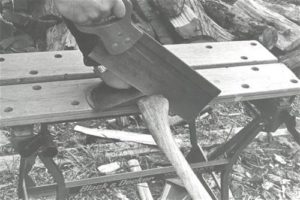
1. Remove the old axe handle. Avoid dulling your saw against the metal axe head.
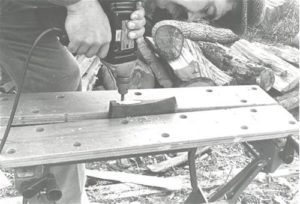
2. Drill out the wood in the axe head to relieve pressure.
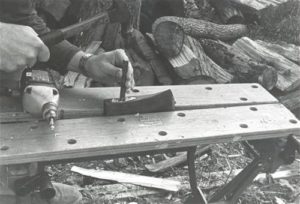
3. Pound out old wood with a pin punch or cold chisel.
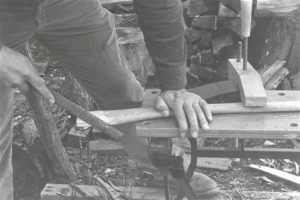
4. Shape the new axe handle to the eye (hole) of the axe head with a wood rasp (shown), spokeshave or surform. Keep refitting the handle to the eyes until the new handle fits without force one-third to one-half of the way into the eye.
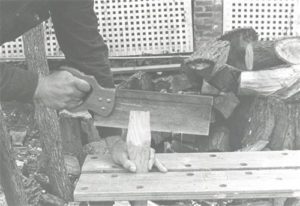
5. Lengthen the cut 1” to 2” in the handle to receive a store-bought wooden wedge. Also cut a small pounding surface on the butt end of the handle by cutting one half inch off the tip of the handle.
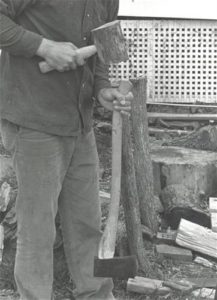
6. “Hang” the axe by fitting the head onto the handle and, while holding the handle in a free hanging position, pound the butt of the handle with a mallet. The inertia of the metal axe head causes it to climb up the handle with each blow of the mallet. It is wise to place the wooden wedge into the split cut before final pounding, to assure its placement.
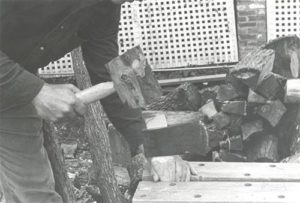
7. Pound home the wooden wedge. Avoid crushing the wedge by heavy blows.
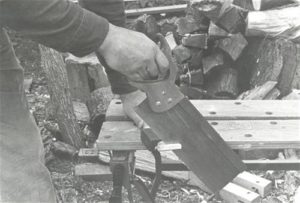
8. Cut away the waste part of the wooden wedge.
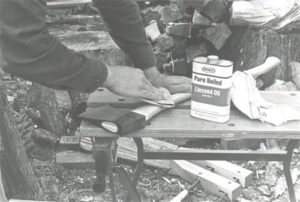
9. To prevent hand blisters when using the axe, sand the handle and apply a linseed oil finish.
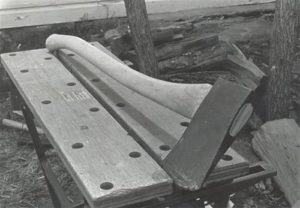
10. If you have further questions, just axe.
These links connect to more Axe resources provided by the USFS:
An Ax to Grind
An Ax to Grind: A Practical Ax Manual
